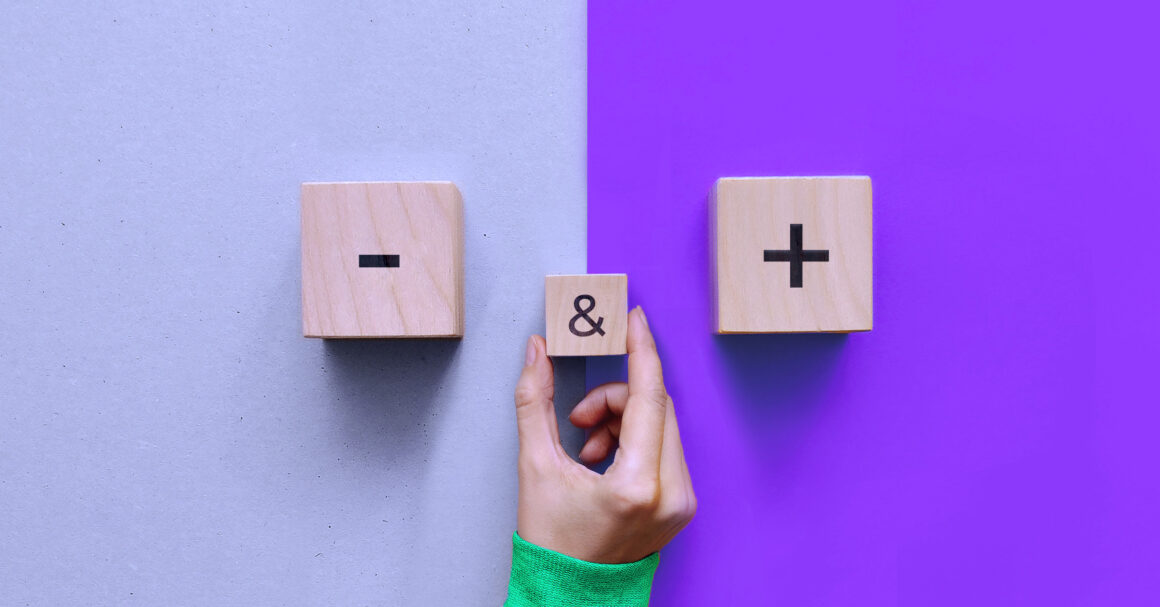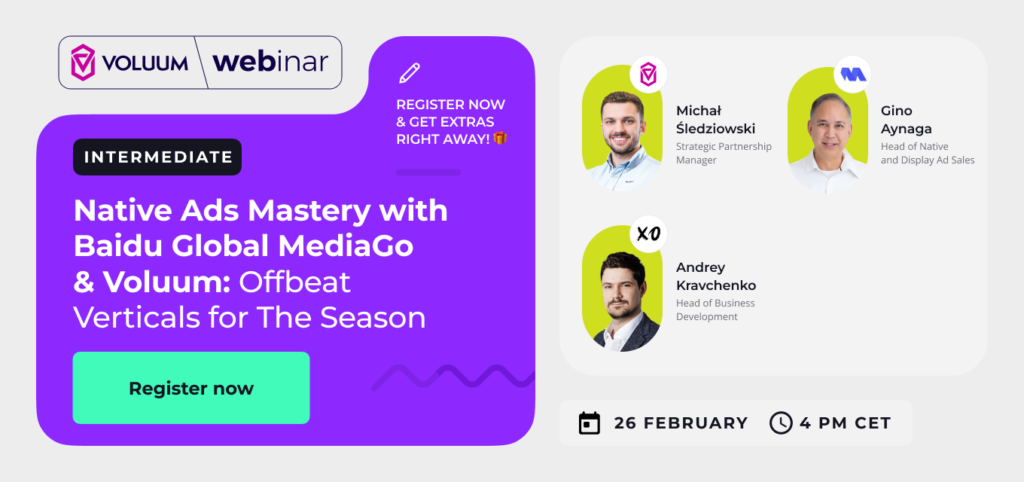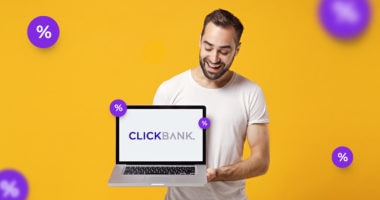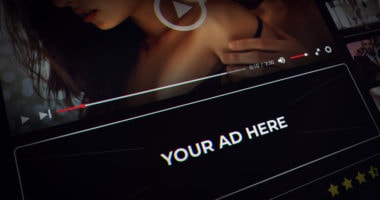If you’re up-to-date with the digital marketing trends, you must have noticed all the hype and excitement surrounding native advertising. Over the last few years, it has become an important component for the majority of big brands in their online advertising strategy. This ad format is already a billion-dollar business. According to Outbrain native advertising spend in the US increased by 37% in 2021 and is expected to be $98.59 billion in 2023. Native advertising has been growing consistently for years and the trend is not going anywhere for a while. This article explains why that is exactly. We will help you discover native ads advantages and disadvantages and help you use them to your profit.
Quick Review: What is Native Advertising?
So, here is what native advertising means today: It’s one of the most innovative forms of advertising and paid media where the ad matches the form, feel, and function of the platform on which it appears.
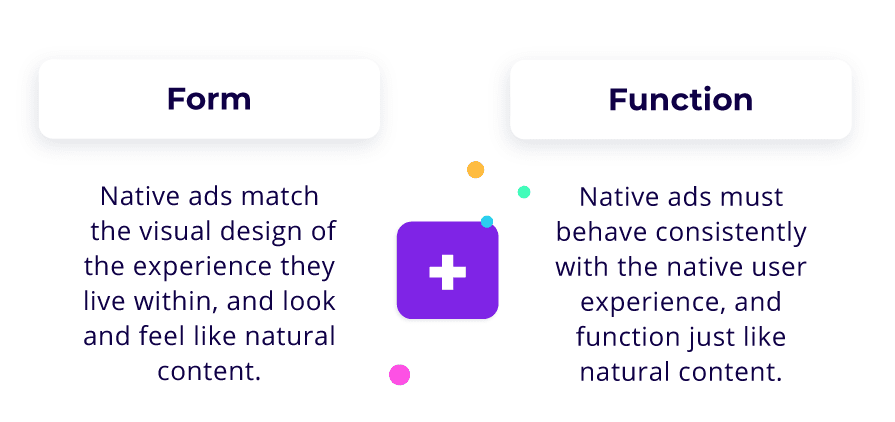
Native ads typically appear in search results, on news sites, editorial sites or social media feeds. Different native ad platforms work with different traffic sources.
No idea how to keep track of that? With Voluum you can easily test your campaigns, find out what offers truly work and focus on optimizing solutions that consistently bring you conversions. If you’re not tracking your campaigns to observe their progress you’re making a big mistake. Online marketing is extremely competitive, so the only way you can survive out there is by making sure that your campaigns are perfectly tailored.
The only way to perfection is through gathering precise data on performance – unachievable without a tracker. If you’re still not convinced there’s plenty of evidence online for you to check out (like 240% ROI 
Native ads have their own unique appeal. If you still wonder whether native advertising could be the right path for your business, then you definitely need to consider the advantages as well as the disadvantages of native advertising.
Let’s get into it: up- and downsides of native advertising!
The advantages of Native Advertising: Why Native Ads are So Effective?
It’s time to discover why both big brands and small business owners keep allocating bigger and bigger budgets for native advertising every year.
The Ultimate Cure for Ad Blindness
Native Ads naturally and seamlessly flow with the existing design of the webpage they are being displayed on. As they don’t disrupt the user’s experience, they appear less intrusive or jarring. Basically, native ads evoke interest in the advertiser’s messaging without being too pushy and aggressive.
In the past years, people have become “ad-blind” and learned to avoid specific types of content or even certain spots in print magazines and web pages. Why? Pretty much, in an effort not to be bombarded with the same advertisements, annoying pop-ups, or flashy banner ads over and over, when they’re searching for specific information. Native advertising bypasses those habits and in fact, catches viewers’ attention. Based on the study, consumers look at native ads 53% more frequently than display ads. As you see, using native ads already gives you an advantage in visibility.
Ad-Block Friendly
As web users grow fatigued with online advertising, more and more users turn to ad blocking software. The goal of ad blockers is simple. They stop intrusiveness and create a positive browsing experience. With the content-complementing nature of native ads, such ads tend to not to get caught, as they fly under the radar. Thanks to native advertising, not only the viewers can actually see the content you place, but also publishers who suffer from ad blockers will have the opportunity to regain losses.
Viewers Stay Longer
What is one of the biggest challenges when it comes to banner ads or pop-ups? Web users automatically close or skip them within the first few seconds. Native ads bypass this problem as they blend extremely well with the editorial content on the page. Besides, since native ads offer more custom targeting options, advertisers have a chance to place their ads in front of customers that are expected to be interested in this specific advertising content. As reported by Reuters, around 75% of consumers say that, if advertorials pique their interest, then they will engage with it.
Money, Money, Money
Native Ads are relatively less expensive than traditional advertising methods like billboards or displayed ads. Thanks to the amazing customer targeting capabilities of native ad networks, such ads are delivered only to users whose needs and desires most closely match promoted product or service. In fact, their costs are much more efficient. After all, higher click through rates ultimately lead to lower costs per click and cost per customer acquisition.
Native + Mobile = BFF
As stated by Business Insider, native ads truly shine on mobile devices and tablets where people are spending an ever-increasing amount of time. Nowadays, the average US adult spends around 2 hours, 54 minutes per day glued to the mobile phone, jumping between different apps and websites, consuming content, and making purchases.
What’s more, native advertising is displayed as a part of “organic” content, which means that any platform-specific changes are unnecessary. Basically, native ads are device responsive, so they automatically adjust their size and appearance based on the device used. One version of an ad copy does the job, no matter if the customer is using a mobile or laptop. All you need to remember is there are a couple of principles that should be followed when adjusting your landing page to mobile.
Great Engagement & Increased Brand Loyalty
It seems that consumers are 25% more likely to engage with a native ad when compared to a traditional banner advertisement. Why? The beauty of native ads is that for all intents and purposes, advertisers really create content. As long as it adds value and it’s educating or entertaining, readers may become very interested in it and click on the ad to read more. Along with building brand awareness, it’s a great chance to create a relationship based on trust.
There is no question that users appreciate useful marketing content from brands that seem to provide assistance and support, not just simply make money. Focusing on quality will pay off in the long term, as customers will often reward the brand for this effort with their loyalty.
Not only do native ads get more attention, but they also have a great potential to go viral, as just like editorial content, they tend to have unique URLs and can be quickly reposted on social media sites or messaging apps. Based on the study, around 32% of people would share a native ad with a friend or family member while only 19% would do the same with a display ad.
Basically, this habit is a win-win situation for both advertisers and publishers. While advertisers get more views and greater reach, publishers benefit from viral posts that drive traffic to their websites.
What are the disadvantages of Native Advertising?
Let’s take a look at the negative side of native ads:
On the Edge
Because of tricky and in some cases dishonest headlines, readers may see native ads as misleading or even unethical. If users do not get what they expect they feel deceived and end up leaving a website having an unfavorable product and brand perception. Obviously, negative brand awareness can break customer loyalty and when that trust is lost, it’s really hard to get it back.
Publishers May Receive Backlash
Native advertising is a chance, but also a risk for publishers. When they allow native ads to be placed on their websites, the traffic may go down, even if the revenue goes up. Simply, it’s all about keeping an eye on the ad and the content quality. If it’s too low, publishers will have to face the frustration of annoyed readers. Not to mention a decline in interest rates and website traffic.
Time & Money Needed
A high-performing design of all native ad elements requires time and creativity, good marketing and photoshop skills. The right combination of image and words can be a real game-changer, but you definitely need full commitment, patience, and some money which you are ready to spend on tests. Without relevant experience, creating a genuine marketing campaign could be a bit of a challenge.
AI Advertising Cost Impact
The importance of the most recent advances in AI cannot be underplayed, especially as a cost-lowering factor.
Generative AI tools can be used to streamline the process of creating content and save money or time on hiring someone to do it or doing it by yourself. AI-assisted content writing tools can replace a full-time content writer or a market researcher – but not a marketer. This is an additional factor that saves cost: a marketer can focus on analysis, strategy and decision-making instead of writing 10 variations of a headline. The additional time spent polishing their advertising efforts should result in optimized campaigns that produce higher ROI.
It should be noted that most AI solution available now on the market are free to use. There are of course paid ChatGPT plans that give you access to a newer version of a language model but I would argue that for the sole purpose of writing content for advertorial landing pages, a free version is good enough. So, if there’s a choice between ‘good enough’ and free to use solution or an approach that involves humas that need to be paid and take time to deliver results – what would you pick?
6 Tips For Creating Killer Native Ads
1. Provide Quality
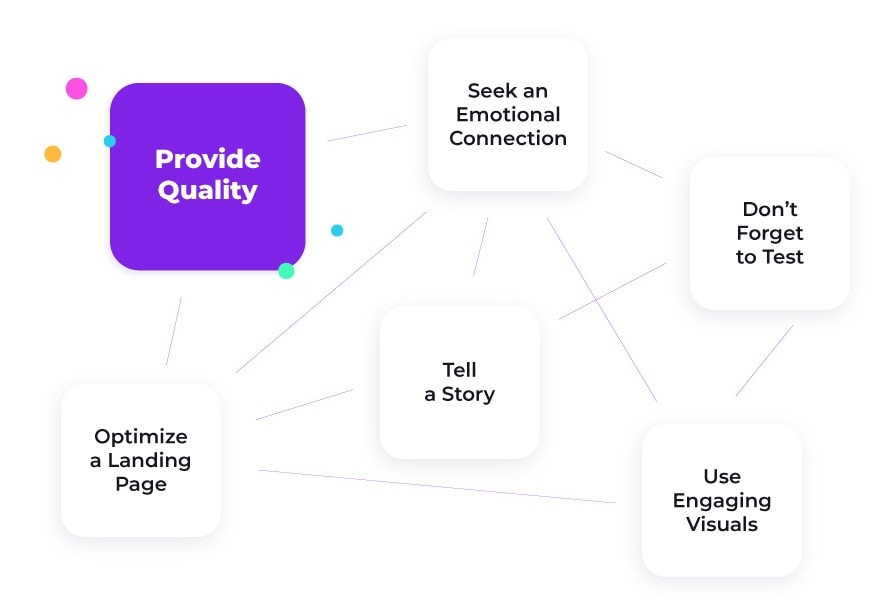
It’s simple. You need to provide real value to the people looking at your ad. Your goal is to explore the interests of potential customers and focus on topics that suit their expectations, hopes, needs, as well as beliefs. Just make sure your ad is share-worthy. There is no question that high-converting native ads are nothing more than superior pieces of content that inspire readers with pure enthusiasm and quality. Ask yourself, “If I were a reader, would I enjoy this ad?” If the answer is no, then you have more work to do.
2. Use Engaging Visuals
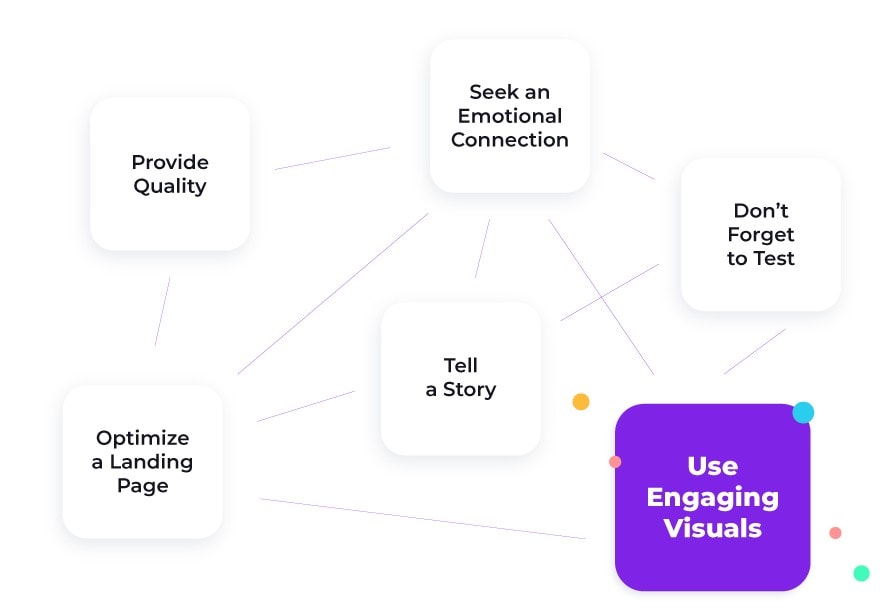
When running native ads, you should always plan to implement aesthetically pleasing content. Images not only significantly increase user engagement, but also help customers to digest information. Here are a couple of things you should keep in mind when choosing an image:
- Keep it real and use images that depict humans in more natural environments. Customers tend to associate with people’s authentic experiences and emotions rather than with some random posted product shots.
- Stay away from generic stock images. Real people get more attention, stock photo people are largely ignored. They feel staged and often fail to match the mood or tone of the editorial content.
- The vast majority of consumers heavily focus on the visual aspect of the product when making a purchase. That’s why understanding some basics about the psychology of color in marketing can help you attract more buyers. A simple infographic from Digital Synopsis can easily help you make a few tweaks in your page’s design.
- According to trends from March 2022 pulled by Taboola pictures that are close-ups without text see higher CTR rates than graphics.
- Be transparent and keep it linked. Your creatives should relate to the headline and description of your ad, so the users know what to expect once they click. Don’t make them feel deceived. Misleading users won’t win you any brownie points.
3. Seek an Emotional Connection
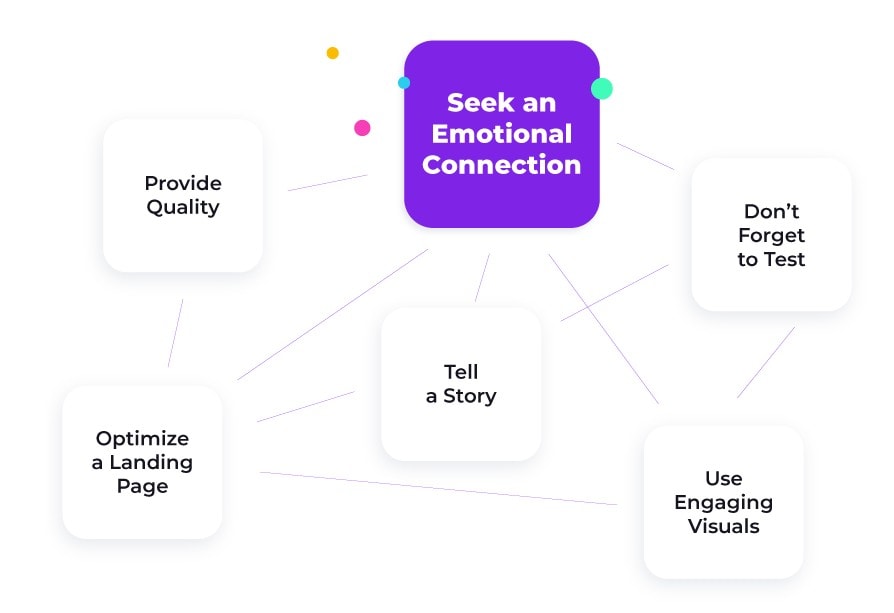
Humans are emotional. They feel before they act. Studies show that most of the time when making decisions people rely on emotions, rather than information. In fact, emotional advertising is one of the surefire ways to get users to convert, as it helps people decide purely with their hearts. However, keep in mind that you can’t always target joy and happiness. Think about the product that you are promoting, the industry, and its target audience. Try to dig deep and precisely define what kind of feelings you’re aiming to elicit. Later, with that in mind, design your native ads.
4. Tell a Story

Everyone loves a good story. As species, we immerse ourselves in stories. Clearly, storytelling with native formats is a proven way to make your audience stop scrolling and engage with your message. Well, remember that just because you create content doesn’t mean you effectively use storytelling. It’s a bit more complicated. A great story must be:
- Meaningful – it has to be interesting and relevant to the people you’re trying to reach;
- Personal – people need to feel personally connected to your story;
- Emotional – it’s all about stimulating emotion, together with empathy;
- Authentic – it’s a key to cultivate consistency so that people can not only identify but trust your content.
5. Optimize a Landing Page
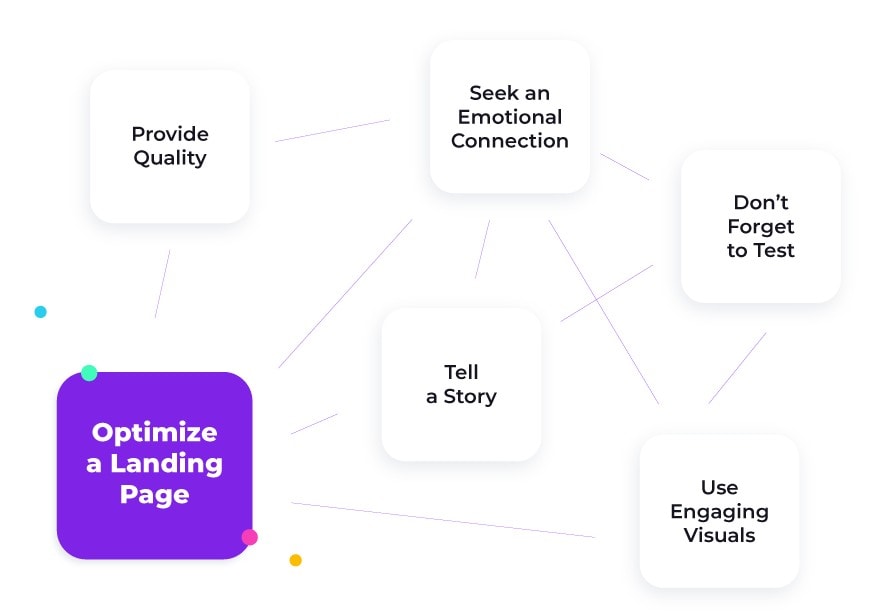
Landing pages present an excellent opportunity to boost engagement rates and encourage the desired action once a potential customer has clicked on the ad. That’s why you should make sure that your landing page design is on point and ideally fits the rest of the content you’ve created.
Simply, a successful landing page is a perfect mix of a good message, a well-thought structure, and a simple, but unique design. Such a page must contain all the essential elements, as each has its own, proper function. Read our “The Rocket Fuel Guide to Boost Landing Page Conversion Rates” article and discover key components of a conversion-friendly landing page design.
6. Don’t Forget to Test
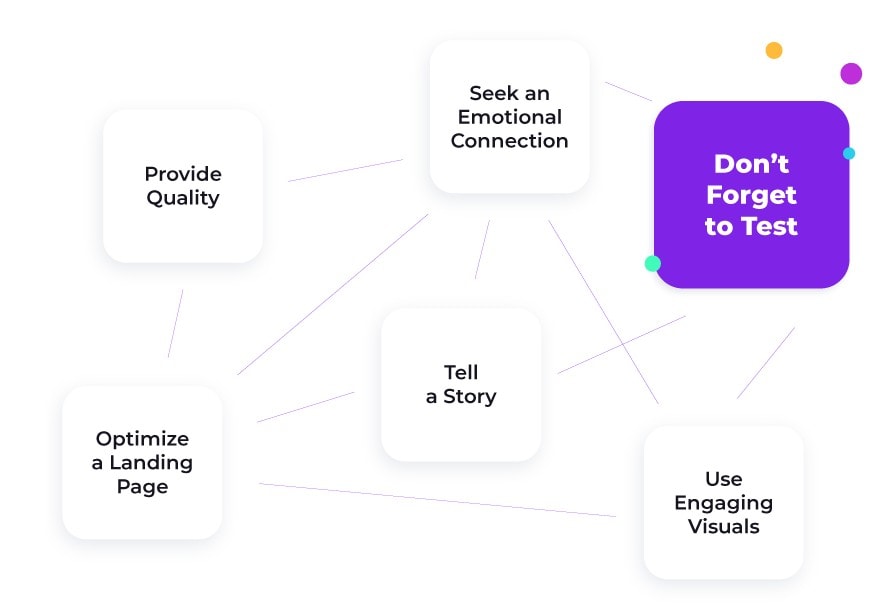
You can’t always be right from the start. So, test various headlines together with multiple images in order to find the best combination. Quite often it can be just one word in the headline or a certain brightness level of your creative, which makes a huge difference in the campaign performance.
Plus, to be truly successful you should monitor your campaigns. After you’ve run a few ads and optimized the best ones, increase spend on the ads that are doing well, and turn off ads with low engagement rates. This task is much easier if you’re using a tracker like Voluum that allows you to create paths and flows for checking which parts of you campaigns really work or if you go for our Automizer feature low-converting elements will be automatically paused to save you some sleepless nights and worry over your earnings.
The Bottom Line
Now you know the good, the bad and the ugly of native advertising. Also, you already know some of our marketing tips on how to create a successful native advertising campaign.
At the end of the day, as long as you play by the rules and create valuable, quality content, you’re on the right track. The advantages of native advertising campaigns will further outweigh the downsides in the majority of cases. One of the most important points though is that regardless of how great your campaign ideas are, you need to track. Without tracking, you won’t know what’s actually working and delivering your conversions and profits.
Don’t wait any longer and start your native adventure today with the support of our tracker!

